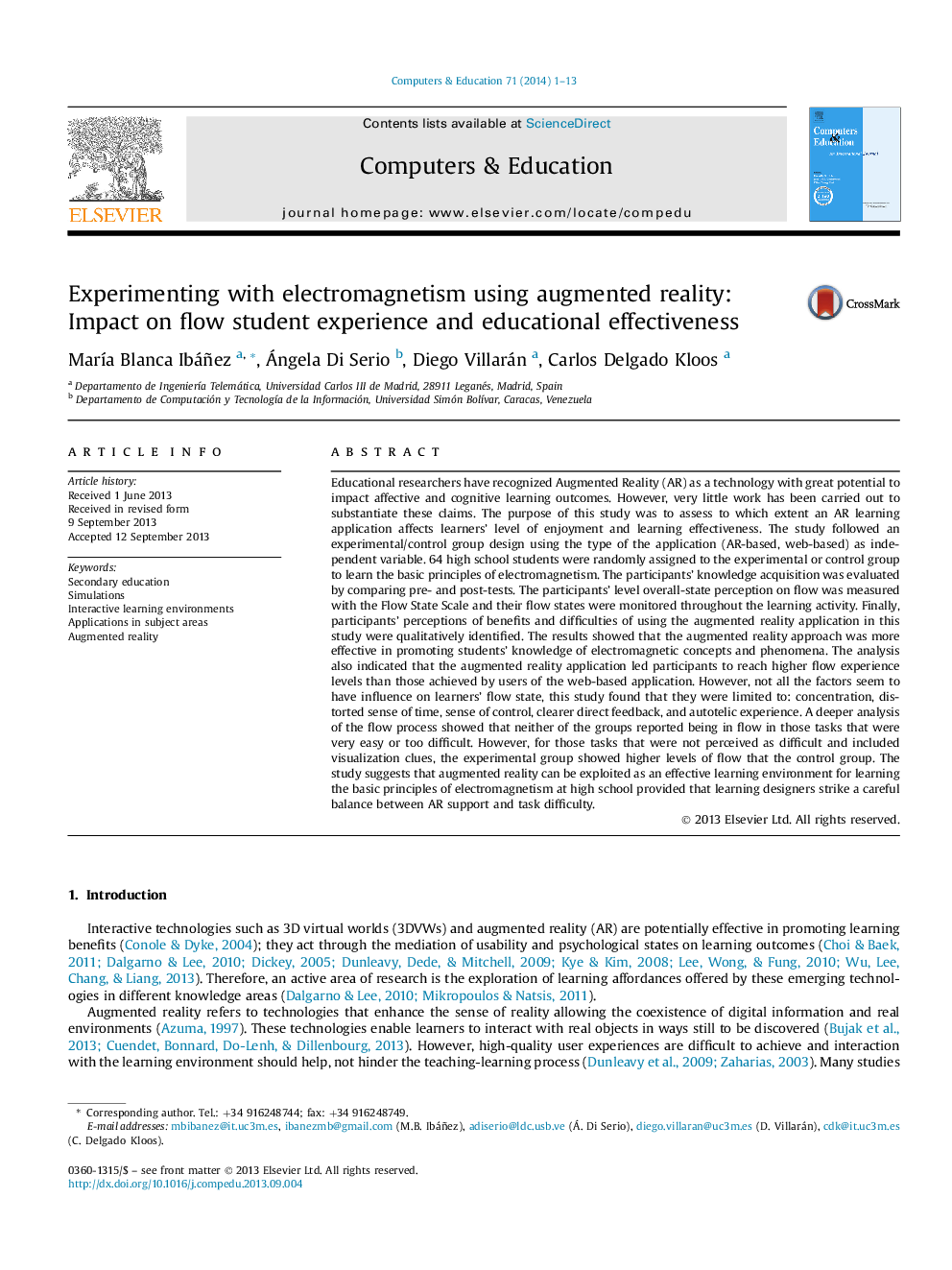| کد مقاله | کد نشریه | سال انتشار | مقاله انگلیسی | نسخه تمام متن |
|---|---|---|---|---|
| 348432 | 618188 | 2014 | 13 صفحه PDF | دانلود رایگان |
• Comparison of augmented reality and Web interfaces for learning electromagnetism.
• Higher levels of flow were observed in students who worked with augmented reality.
• Evaluation reports better learning outcomes for augmented reality interface users.
Educational researchers have recognized Augmented Reality (AR) as a technology with great potential to impact affective and cognitive learning outcomes. However, very little work has been carried out to substantiate these claims. The purpose of this study was to assess to which extent an AR learning application affects learners' level of enjoyment and learning effectiveness. The study followed an experimental/control group design using the type of the application (AR-based, web-based) as independent variable. 64 high school students were randomly assigned to the experimental or control group to learn the basic principles of electromagnetism. The participants' knowledge acquisition was evaluated by comparing pre- and post-tests. The participants' level overall-state perception on flow was measured with the Flow State Scale and their flow states were monitored throughout the learning activity. Finally, participants' perceptions of benefits and difficulties of using the augmented reality application in this study were qualitatively identified. The results showed that the augmented reality approach was more effective in promoting students' knowledge of electromagnetic concepts and phenomena. The analysis also indicated that the augmented reality application led participants to reach higher flow experience levels than those achieved by users of the web-based application. However, not all the factors seem to have influence on learners' flow state, this study found that they were limited to: concentration, distorted sense of time, sense of control, clearer direct feedback, and autotelic experience. A deeper analysis of the flow process showed that neither of the groups reported being in flow in those tasks that were very easy or too difficult. However, for those tasks that were not perceived as difficult and included visualization clues, the experimental group showed higher levels of flow that the control group. The study suggests that augmented reality can be exploited as an effective learning environment for learning the basic principles of electromagnetism at high school provided that learning designers strike a careful balance between AR support and task difficulty.
Journal: Computers & Education - Volume 71, February 2014, Pages 1–13
